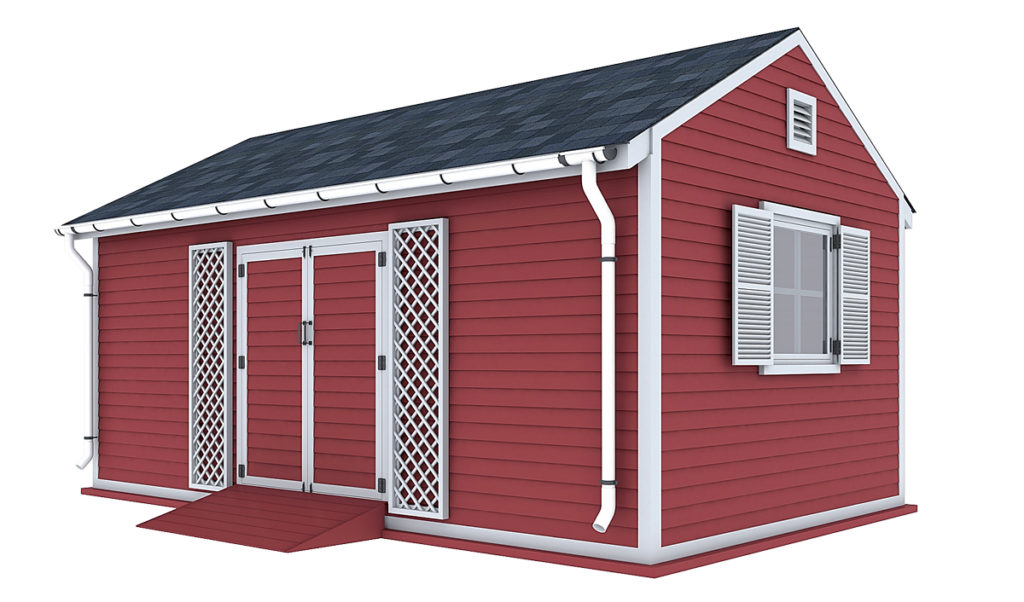
Affordable 12x20 Shed Plans with Loft for Gardeners and DIYers
Dreaming of a spacious, organized garden shed that also provides valuable storage space? A 12x20 shed with a loft offers the perfect solution, maximizing your square footage without breaking the bank. This article provides detailed plans and considerations for building your own, empowering you to create a customized haven for your gardening tools and supplies.
Designing Your Dream Shed: Key Considerations
Before diving into construction, carefully plan your shed's layout. Consider your specific needs. Will you primarily use it for storing gardening equipment like potting soil, tools, and seeds? Or will you also need space for larger items such as bicycles, lawnmowers, or even a small workbench? Think about the flow of work within the shed. Do you want easy access to frequently used tools? A well-thought-out design significantly impacts usability and efficiency. Remember, this is your personal sanctuary, so personalize it to reflect your gardening style and preferences. Sketch out different layouts; this is crucial to avoid costly mistakes down the line. Consider adding features like windows for natural light and ventilation, and perhaps even electrical outlets for power tools. This thoughtful preparation will save you both time and money in the long run.
Materials List: Keeping it Budget-Friendly
Choosing cost-effective materials without compromising quality is paramount for an affordable build. Pressure-treated lumber forms a robust and affordable base for your shed's structure. For the roof, consider using asphalt shingles; they offer a balance of durability and affordability. Plywood sheathing provides a sturdy and relatively inexpensive covering for the walls and roof. Don't forget essential fasteners such as nails, screws, and bolts. Opt for recycled or reclaimed materials where possible to further reduce costs. For example, you might find reclaimed lumber or salvaged roofing materials at a lower cost. Always compile a detailed list of materials needed. This prevents costly mid-project runs to the hardware store.
Optimizing Material Costs
Source materials strategically: Explore local lumber yards, salvage yards, and online marketplaces for potential savings. Buy in bulk: Purchasing larger quantities of materials often results in significant discounts. Plan your cuts carefully: Minimize waste by carefully planning your cuts and using leftover lumber for smaller projects or bracing.
Step-by-Step Construction Guide: Building Your Shed
Building your shed will involve several key steps. First, prepare the site by leveling the ground and creating a solid foundation, either by pouring concrete or using pressure-treated lumber for a base. Next, erect the frame, ensuring squareness and stability at every stage. Sheath the walls and roof, adding any desired windows and doors. Then, install the roofing material. Finally, add the loft structure, considering the weight capacity and access. Remember safety first! Always wear appropriate safety gear, use proper lifting techniques, and follow building codes meticulously.
Constructing the Loft
The loft offers valuable extra storage, perfect for seasonal items or less frequently used equipment. Plan the loft's structure to support the intended weight. Consider using sturdy lumber and ensuring adequate support beams. A staircase or a simple ladder provides convenient access. You can create a simple pull-down ladder system to save space if needed.
Finishing Touches and Personalization
Once the structure is complete, add your personal touches. Paint the exterior to protect the wood and add visual appeal. Install shelving inside for better organization. Consider adding a workbench for potting or repairs. Remember to seal any gaps to prevent moisture damage and protect against pests. Personalize the interior to suit your needs. Adding small details such as hooks for hanging tools can make a big difference in organization and overall usability.
Building your own 12x20 shed with a loft is a rewarding project that combines affordability with functionality. By carefully planning, sourcing materials efficiently, and following a structured construction process, you can create a personalized garden haven that enhances your gardening experience for years to come.

Note: Only a member of this blog may post a comment.